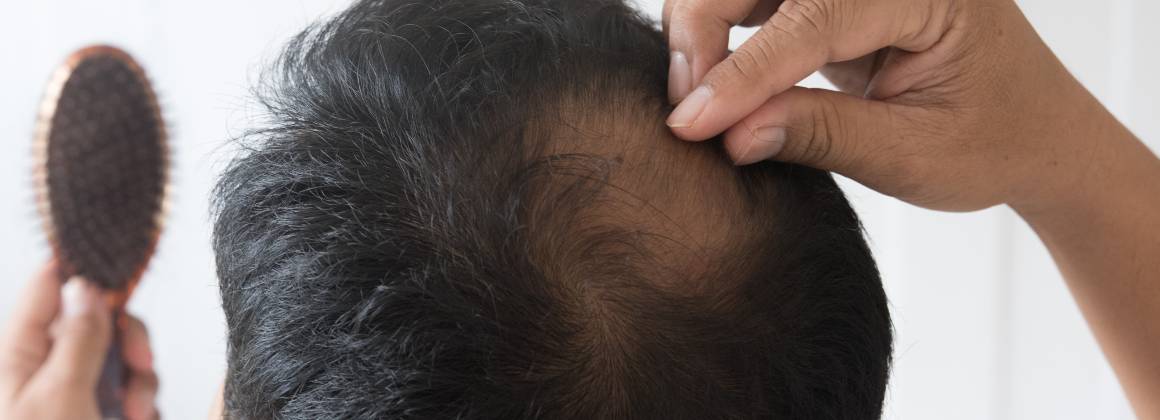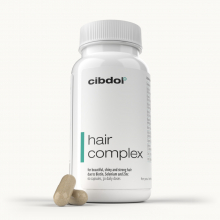Regrow thinning hair: Causes, symptoms, and treatment for hair loss and regrowth
Published:
Hair loss can be distressing, but the good news is that in many cases it is possible for thinning hair to grow back. This article explores the causes of thinning hair, treatments and techniques to regrow hair, and tips for maintaining healthy hair growth. Read on to understand the factors influencing hair loss and regrowth.
Contents:
- What Causes Thinning Hair and Hair Loss?
- Can Thinning Hair Grow Back? Understanding the Hair Growth Cycle
- How to Regrow Thinning Hair? Tips and Treatment Options
- Diet and Lifestyle Tips for Healthy Hair Regrowth
- What is hair thinning?
- What are the causes of hair thinning?
- How can I determine the cause of my hair thinning?
- Is it possible to regrow thinning hair?
- What are the common symptoms of hair thinning?
- What are the different types of hair loss?
- What are the available treatments for hair thinning?
- How long does it take for hair to regrow?
- Can stress or diet lead to hair thinning?
- How can I promote hair growth and prevent hair thinning?

What Causes Thinning Hair and Hair Loss?
Thinning hair occurs when hair enters the telogen (resting) phase and sheds before new hair emerges. Some common causes include:
- Heredity and genetics - This includes male- or female-pattern baldness which causes predictable patterns of gradual hair loss. Genetics can predispose you to hair loss.
- Hormonal changes - Hormones influence hair growth cycles. Changes like pregnancy, childbirth, menopause or thyroid disorders can trigger temporary hair loss called telogen effluvium.
- Medications and supplements - Certain drugs used for treating cancer, arthritis, depression, heart issues and high blood pressure may cause hair loss as a side effect.
- Illness or surgery - Serious illnesses like cancer and autoimmune disorders can cause extreme hair shedding. Hair loss after surgery or adverse reactions to anesthesia are also possible.
- Stress - Emotional or physical stress pushes more hair follicles than normal into the shedding phase. Acute stressors like childbirth or bereavement often cause noticeable but temporary hair loss.
- Nutritional deficiencies - Low iron, zinc, protein, vitamin D or B12 levels hinder hair growth and make strands prone to shedding. Crash dieting or eating disorders deplete nutrients needed for hair health.
- Damaging hair care - Excessive heat styling, tight hairstyles, harsh chemical processing and rough handling damage the hair follicles and cause hair loss over time.
- Scalp conditions - Skin issues like seborrheic dermatitis, psoriasis, eczema, fungal infections and dandruff cause itchiness, inflammation and hair loss if left untreated.
Can Thinning Hair Grow Back? Understanding the Hair Growth Cycle
Human hair follows a growth cycle with three main phases:
- Anagen - Active hair growth phase which lasts 2-8 years. About 85-90% of hair is in this phase at any given time.
- Catagen - Transition phase marking the end of active growth. It lasts about 2-3 weeks.
- Telogen - Resting phase when hair stops growing and eventually sheds. It lasts 2-4 months.
Hair loss occurs when a higher than normal number of follicles enter telogen phase prematurely and shed. However, in most cases, the follicle remains alive and can reenter anagen phase to grow new hair. So yes, it is possible for thinning hair to grow back unless the follicles are severely damaged or inactive.
How to Regrow Thinning Hair? Tips and Treatment Options
If thinning hair is a concern, here are some tips and treatments to consider for stimulating regrowth:
Identify and Address Contributing Factors
- Get checked for any underlying medical conditions contributing to excessive hair shedding like nutritional deficiencies or thyroid disorders.
- Make sure to use gentle hair products and minimize heat and chemical treatments. Handle wet hair gently.
- Reduce stress and anxiety through yoga, meditation or therapy. Manage other stressors like insomnia, grief or major life changes as well.
- Improve diet to include protein rich foods as well as iron, zinc, vitamins B, C, D and minerals like selenium and silica.
FDA-Approved Medications
Medications like Minoxidil and Finasteride help prolong anagen phase and regrow hair by blocking DHT which otherwise shrinks hair follicles. These are clinically-proven and safe if used correctly under medical supervision.
Hair Transplants
This surgical procedure extracts follicular units from the back and sides of the scalp and implants them where needed. It has a high success rate for permanent hair restoration in pattern baldness but is expensive.
PRP Therapy
Platelet-rich plasma injections contain growth factors from your own blood that stimulate follicles for improving thickness and growth. Multiple sessions may be required for visible improvement.
Microneedling
Using small needles to create minor injuries on the scalp prompts tissue regeneration. When combined with treatments like PRP or hair loss medications, it boosts their absorption.
Low Level Laser Light Therapy
Cold laser light is pulsated to nourish hair follicles. While not a cure, laser devices help thicken miniaturized follicles and prolong anagen phase to encourage growth.
Nutraceuticals and Vitamins
Hair-boosting supplements like biotin, saw palmetto, collagen and nutrient-rich formulas can improve hair quantity and quality when the deficiency is supplemented. But check with a doctor first.
Diet and Lifestyle Tips for Healthy Hair Regrowth
Alongside treatment, incorporating hair-healthy habits optimize your chances of regrowing thicker hair:
- Eat protein rich foods like eggs, nuts, beans, fish and lean meats.
- Take vitamins like zinc, iron, biotin and vitamin D if deficient.
- Eat omega fatty acids from salmon, avocados, walnuts and olive oil to reduce inflammation.
- Stay hydrated and minimize alcoholic, sugary and caffeinated drinks which dehydrate hair.
- Apply oil masks with onion juice, amla, rosemary or coconut oil weekly to condition the scalp.
- Use a gentle, sulfate-free shampoo and conditioner. Rinse with cool water after washing.
- Avoid tight hairstyles that pull on hair like tight ponytails. Let hair air dry instead of overheating with blow dryers.
- Massage the scalp regularly to increase circulation and stimulate hair follicles.
- Reduce stress through relaxing activities like yoga, meditation and frequent breaks. Get enough sleep.
- Quit smoking since it restricts blood supply to the scalp and can damage hair follicles.
While thinning hair can be worrying, taking a holistic approach that combines medications, growth treatments and healthy lifestyle habits is the best way to encourage regrowth. Be patient and consistent, as it can take months to see visible improvement in hair quantity and fullness. Consider consulting a trichologist or dermatologist for professional guidance tailored to your specific hair needs.
In summary:
- Thinning hair results from disruption of the normal hair growth cycle, pushing more follicles into the shedding phase.
- In most cases hair can regrow unless the follicles are permanently damaged, as follicles usually remain alive even after shedding.
- Identifying and addressing factors like stress, diet, medications or illnesses contributing to excessive hair loss allows the normal growth cycle to resume.
- Medications, supplements, PRP therapy, laser treatment and hair transplants are clinically proven approaches to encourage regrowth.
- Improving diet, scalp care, hair practices and lifestyle habits complements medical treatments for optimizing hair health and thickness.
- With a multi-pronged approach, thinning hair can significantly improve over time through regrowth. Be patient and consistent.
What is hair thinning?
Hair thinning is the gradual reduction in the density and diameter of the strands of hair on your head.
What are the causes of hair thinning?
The causes of hair thinning can vary and may include factors such as genetics, hormonal changes, certain medical conditions, scalp irritation, and a poor diet.
How can I determine the cause of my hair thinning?
It is recommended to consult with a healthcare professional or a dermatologist who specializes in hair loss to determine the exact cause of your hair thinning.
Is it possible to regrow thinning hair?
While it may not be possible to regrow all types of hair loss, there are treatment options available that can help promote hair growth and prevent further thinning.
What are the common symptoms of hair thinning?
Common symptoms of hair thinning include a noticeable decrease in hair density, the appearance of patches or bald spots, and an increase in the amount of hair strands shed per day.
What are the different types of hair loss?
There are several types of hair loss including male pattern baldness, female pattern hair loss, alopecia areata, and telogen effluvium.
What are the available treatments for hair thinning?
Treatments for hair thinning vary depending on the cause and severity of the condition. They may include topical medications, oral medications, laser therapy, and hair transplant surgery.
How long does it take for hair to regrow?
The regrowth of hair can vary depending on the individual and the type of hair loss. It may take several months to a year for noticeable improvement to occur.
Can stress or diet lead to hair thinning?
Yes, stress and a poor diet can contribute to hair thinning. It is important to manage stress levels and ensure a balanced diet to maintain healthy hair.
How can I promote hair growth and prevent hair thinning?
To promote hair growth and prevent hair thinning, it is recommended to maintain a healthy lifestyle, avoid harsh hair treatments, use mild shampoos and conditioners, and nourish the hair with essential vitamins and nutrients.










